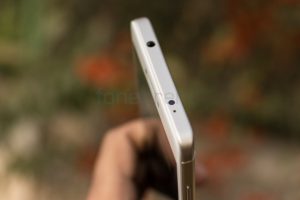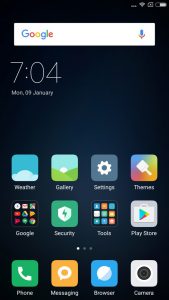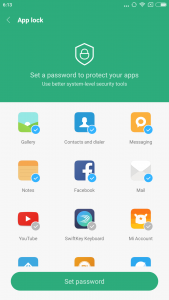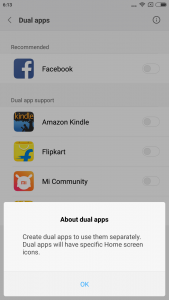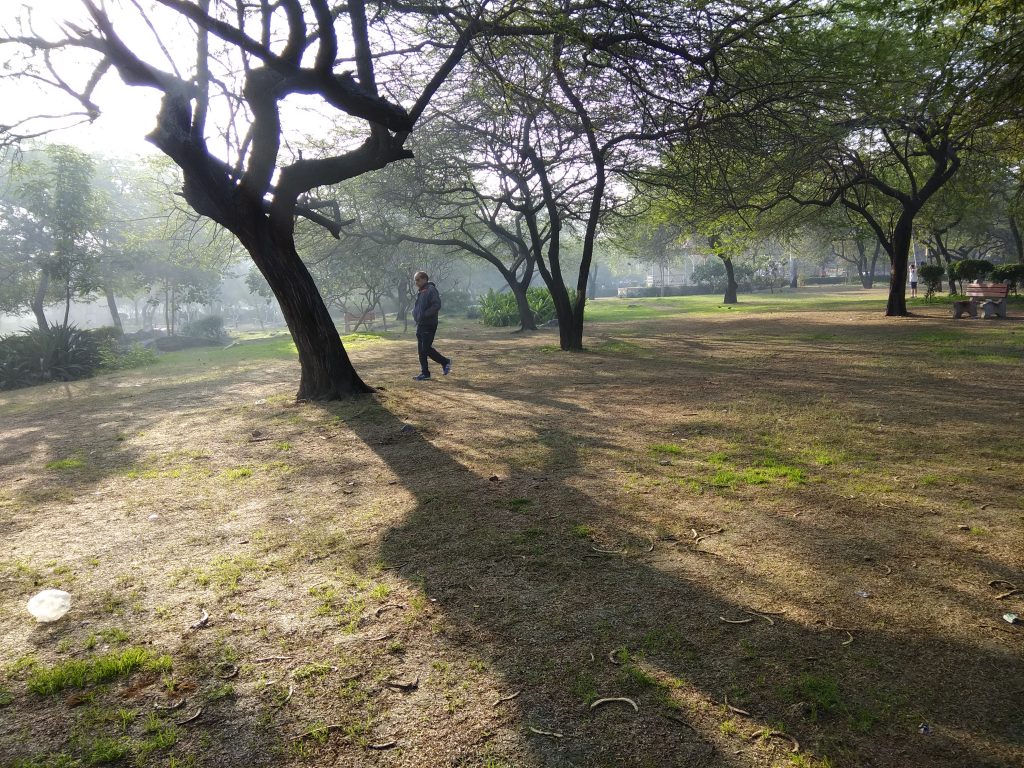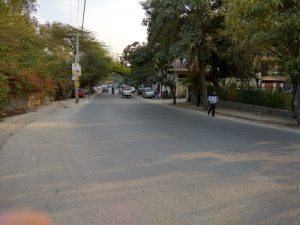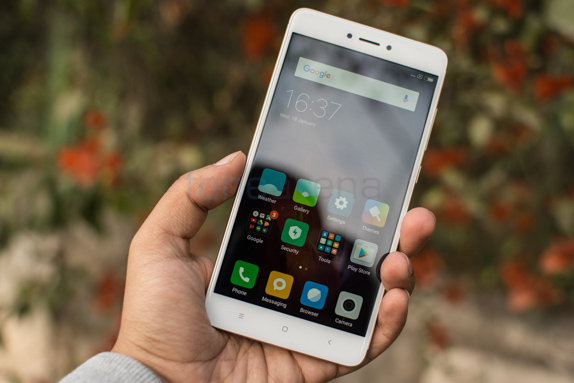
Last year’s Redmi Note 3 turned out to be one of the most popular smartphones in the sub Rs. 15,000 segment and deservedly so. Between good specifications and even better pricing, the phone received praises from the critics and customers both. So when Xiaomi sent over the Redmi Note 4 over review, we were obviously very excited. Having spent the last few weeks with the phone, here’s what we think of the Redmi Note 4.
Unboxing
Video Review
Xiaomi Redmi Note 4 specifications
- 5.5-inch (1920 x 1080 pixels) Full HD 2.5D curved glass display, up to 72% NTSC color gamut, 1000:1 contrast ratio
- 2GHz Octa-Core Snapdragon 625 14nm processor with Adreno 506 GPU
- 2GB / 3GB RAM with 32GB storage (eMMC 5.0) / 4GB RAM with 64GB storage (eMMC 5.0), expandable memory up to 128GB with microSD
- MIUI 8 based on Android 6.0 (Marshmallow)
- Hybrid Dual SIM (micro + nano/microSD)
- 13MP rear camera with PDAF, dual-tone LED Flash, f/2.0 aperture
- 5MP front-facing camera, f/2.0 aperture, 85-degree wide-angle lens
- Fingerprint sensor, Infrared sensor
- Dimensions: 151x76x8.45mm; Weight: 165g
- 4G VoLTE, Wi-Fi 802.11 a/b/g/n, Bluetooth 4.1, GPS + GLONASS
- 4000mAh (minimum) / 4100mAh (typical) battery
Design
The Redmi Note 4 like the Note 3 continues a certain design tradition. The phone is instantly recognizable which certainly is a feat when pitched against a sea of me-too products. That is not to say that Xiaomi has rested on it’s laurels. No, there are changes in all the right places and the refinements are quite evident once you’ve spent some time with the hardware.
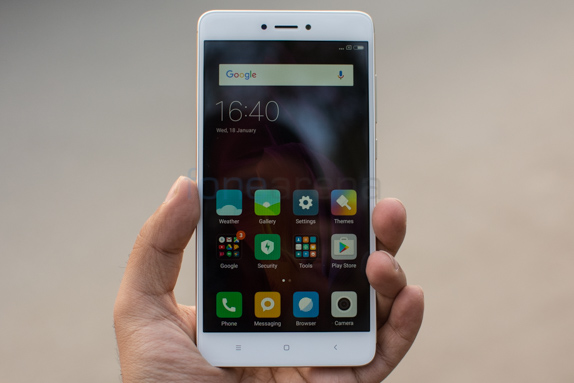
There is nothing particularly bold about the design but the handsome and subdued look works just fine on a device that is meant to be used a daily driver. After all, nobody ever takes their Ferrari to work! Jokes apart, the front is mostly dominated by the 5.5 inch display. The entire front panel gently tapers off to end with 2.5D curves around the edges. Up above the screen is a 5MP front facing camera alongside the proximity and ambient light sensor. Below, you’ll find the standard range of menu buttons seen in Xiaomi’s devices. The capacitive keys are backlit and correspond to menu, home and back.
The right hand side of the phone houses the power button as well as a volume rocker placed above it. The buttons are made of metal and offer great feedback. The buttons exhibit very well-defined action and are easy to press even when inside a pocket. On the opposite side you’ll find the Hybrid SIM slot tray. While not unexpected, we’d have liked the addition of a USB Type C connector. As it stands, the Redmi Note charges over the microUSB port placed between the speaker grille. There’s a headphone jack and IR blaster lined up along the top edge.
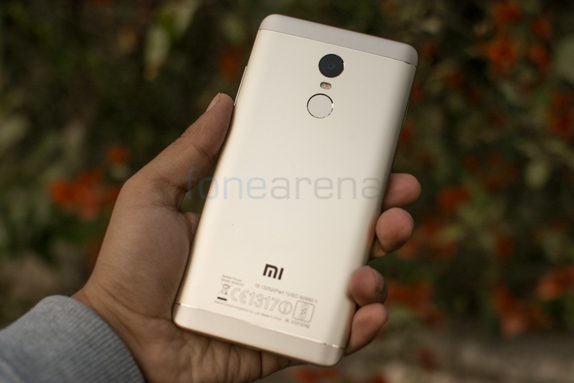
The rear of the phone too tapers off towards the edges and wraps around the corners. The entire design has a very HTC 10 vibe to it and is certainly very pretty to look. The soft touch metal feels great in the hand. You’ll notice antenna lines running along the top and bottom edges of the phone. The camera module and fingerprint sensor are perfectly symmetrical and are aligned with the dual LED flash between them.
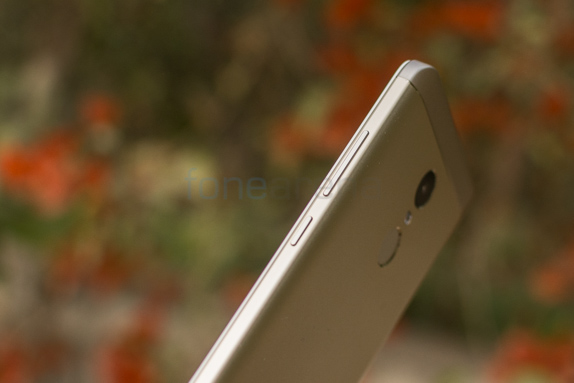
The weight of the phone hasn’t really changed much over the previous generation and at 165grams, the Redmi Note 4 feels solidly built and rather dense. There have been minor alterations to the dimensions with the Redmi Note 4 now measuring 151 x 76 x 8.35 mm. The handset is ergonomic and feels perfectly sized and weighted in the hand.
Software
The software on the Redmi Note 4 is a lesson in familiarity as the entire interface paradigm hasn’t changed much if at all between multiple generations. The phone retains the iPhonesque dismissal of the app drawer and all apps, widgets are placed right there on the homescreen itself.
Getting into the homescreen requires a simple swipe up from the lockscreen that displays the time, notifications and a camera shortcut to dive straight into the camera app.
MIUI 8 is a very heavy custom skin and for those who prefer stock Android, it is going to need a lot of adjustment. That said, there are software niceties thrown around the entire interface. From apps to control the IR Blaster to Second Space capabilities that let you maintain an entirely separate identity on the same phone, these are all features that you’ve seen before but we certainly appreciate their presence all the same. The phone also allows you to maintain multiple copies of apps. The dual apps feature comes in handy if you want to run two separate WhatsApp accounts on the same phone. Similarly you can lock your apps using password protection. There is robust customisation on offer which can be adjusted via the settings menu. You can refer to our previous coverage of the Redmi Note 4 Helio X20 variant where we talk a bit more about the software skin.
Performance
The Redmi Note 4 is powered by a Snapdragon 625 processor clocked at 2.0 Ghz. This is paired with an Adreno 506 GPU in addition to 3-4GB of RAM depending on the variant. Coming to the processor itself, the chipset ranks lower than the Snapdragon 652 and makes do with a pure Octo Core configuration with eight Cortex A53 cores. Performance is great. Having used the hardware all the way from beta testing firmware to the retail ready release, we never faced any deal breaking software issues. The interface is refreshingly smooth and the 4GB of RAM on the 64GB variant should help keep things moving around even after a couple of months of usage. From the most intensive of apps to games, we never encountered any performance constraints. The phone did take a tad bit longer than some other devices to switch on a game but we definitely wouldn’t hold it against the hardware. Overheating is not a concern on the hardware and even with games, the phone got warm at worst.
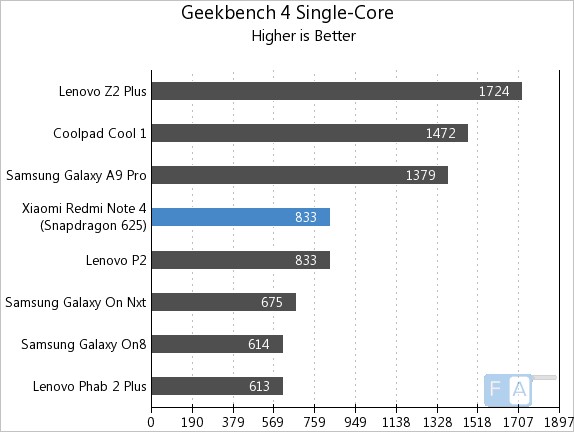
In the Geekbench single core benchmark, the Redmi Note 4 scored 833 points.
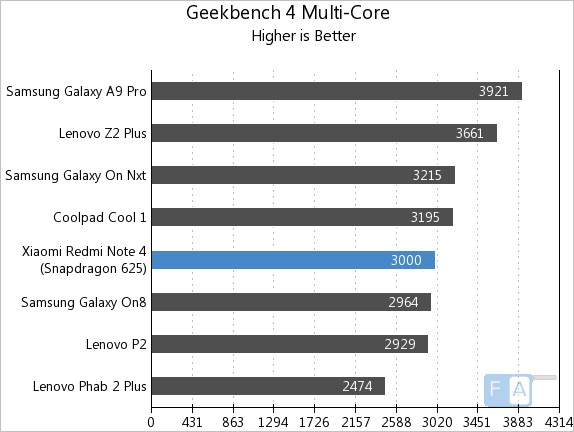
Scoring 3000 points in the Geekbench Multi Core benchmark, the phone placed right in the middle of the test bench.
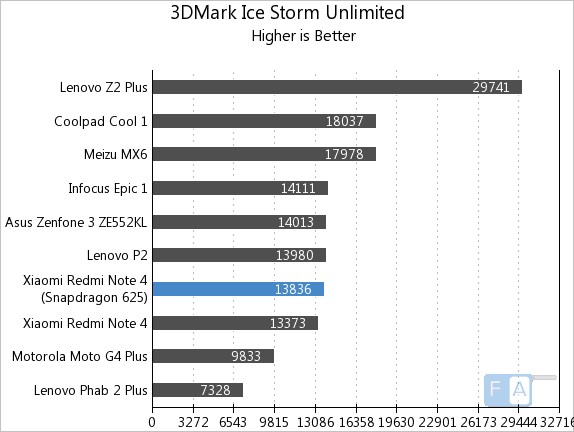
The Xiaomi Redmi Note 4 scored 13836 in the 3D Mark Ice Storm Unlimited benchmark which placed it in the lower end of the test bench. We’ve always maintained that benchmark scores aren’t very indicative of real world performance and this is certainly true in the case of Note 4 that performs admirably despite scoring not so well in the benchmarks.
Display
A 1080p panel stretched across 5.5 inches is what you’ll find on the Redmi Note 4. The IPS panel hasn’t changed much if at all from the Redmi Note 3 and that’s perfectly fine given that the Note 3 packed one of the best displays in the segment. Xiaomi claims that the panel covers 72% of the NTSC gamut and has a contrast ratio of 1000:1.
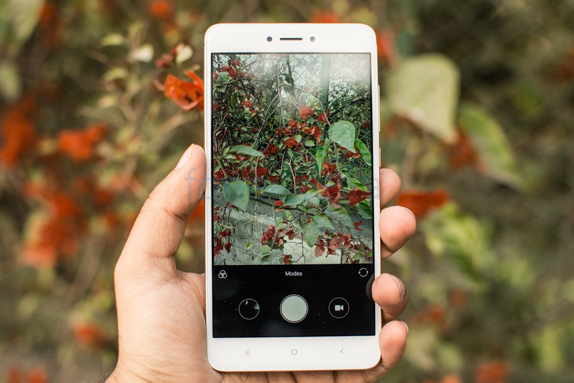
Marketing jargon aside, the panel genuinely punches above its weight and colors are mostly natural albeit with a hint of over-saturation. Perhaps we’ve got the customizability of MIUI to thank but it is possible to change the warmth of the screen panel using a utility built into the phone. You can also adjust the contrast levels which should further help you tweak the color profile. Brightness levels are improved but the highly reflective display continues making it hard to view under direct sunlight. Worth noting, Xiaomi doesn’t claim what, if any, protective glass has been used on the Redmi Note 4 and as such we’d highly recommend getting either a screen guard or being extra careful with the display.
Camera
There’s no getting around the fact that the Redmi Note 4 is a budget device and that compromises are a necessity to achieve the price point. However, commoditization of hardware also ensures that year on year, you’re consistently getting improvements on all fronts including the camera which on its own might be the weakest aspect of the Redmi Note 4.
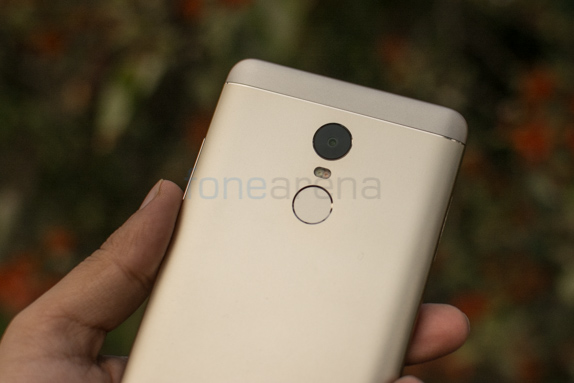
The rear camera is a 13MP module and is equipped with Phase Detection Auto Focus. On the software front, the phone does provide a manual mode which lets you adjust ISO and White Balance. We’d recommend sticking to the automatic shooting mode which makes it a cinch to quickly grab shots. The only options here are toggles for the LED flash and HDR mode. Video capture tops off at 1080p. We’ve included some photo samples below.
Predictably for this category of phones, the camera quality is quite good as long as you’ve got good lighting. We observed camera quality to be a small step up from the Redmi Note 3. The images are generally over-saturated and details are retained well even in the shadow regions though noise does creep in quite a bit.
Worth mentioning is the HDR mode which bumps up sharpness drastically. While certain shots might appear more visually appealing with the HDR turned on, they were consistently over sharpened. Do note that we’re really nitpicking here and for the casual user, the results from the camera on the Redmi Note 4 will be more than satisfactory.
Connectivity & Battery Life
The Redmi Note 4 comes with the same connectivity features as most recent devices from Xiaomi. 4G VoLTE, Wi-Fi 802.11 a/b/g/n, Bluetooth 4.1 LE and GPS + GLONASS are standard features. Xiaomi remains one of the last few manufacturers to include an IR Blaster, you can use the one built into the Redmi Note 4 to control other electronic devices around you. Storage on the phone will vary depending on your variant but we had about 52.4GB available on our 64GB variant. You can expand this using a memory card though unfortunately you’ll have to give up one of the SIM card slots for the privilege. The phone also supports USB OTG.
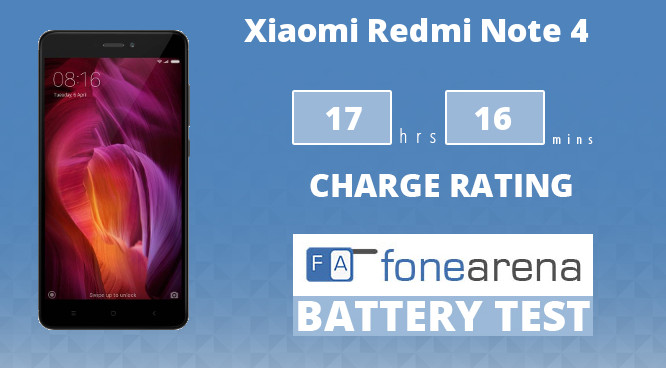
The Redmi Note 4 comes equipped with a 4100 mAh battery that is good enough to last most users almost 1.5 days. With regular use that involved multiple email accounts synced to the device, social media use, phone calls and more, we were unable to deplete the battery through a full day. All said and done, casual and power users alike have nothing to worry about on the battery life front. It achieved a One Charge Rating of 17 hours and 16 minutes, which puts the phone in top 5. Check out the complete set of battery life test results here.
Conclusion
The Redmi Note 4 is a fantastic device in its own right. The build quality has seen improvements in all the right places, battery life and performance are better than ever and even the camera has gotten better.

For better or worse though, we’re at a stage where year to year upgrades yield incremental improvements and if you invested in a Redmi Note 3 or similar smartphone over the last year, you’ll find little reason to upgrade to the Note 4. If you’re in the market for a mid-range device, the Redmi Note 4 is shaping up to be one of the best in the category and definitely worthy of your attention.
The Redmi Note 4 is priced at Rs. 9999 for the 2GB RAM with 32GB storage version, Rs. 10999 for the 3GB RAM with 32GB storage version, while the 4GB RAM with 64GB storage version costs Rs. 12,999. It will be available exclusively from Flipkart starting from 23rd January, 12 noon.



